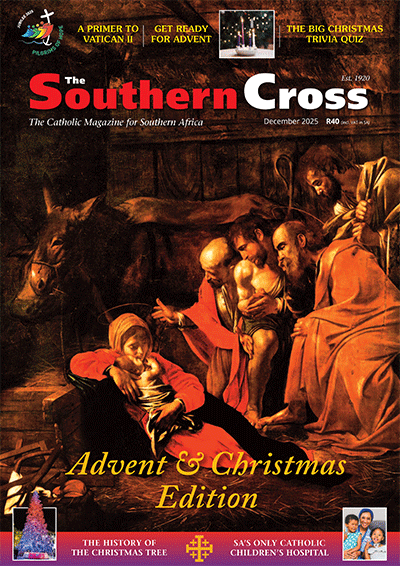Let the new missal bring harmony
The bishops of Southern Africa did the universal Church a favour when they implemented (albeit due to an administrative error) the first phase of the new translation of the Ordinary of the Mass in November 2008.� In just over two months time, the rest of the English-speaking Church will begin getting used to responses such as ��and with your spirit�, three years after Catholics in our region started to use them.
The fierce debates that were sparked by the 2008 implementation served to alert the Church in other English-speaking regions to the potential reaction among their Catholics, and to the hazards of implementing the new translations without extensive and creative catechesis.
Nevertheless, bishops in countries such as the United States, Canada, Britain, Ireland, Australia and New Zealand should expect a backlash not unlike that which their counterparts in South Africa experienced three years ago. These protests will likely centre on ecclesiological, theological and linguistic issues.
While the theological questions are best left to those who are qualified in the field, the aesthetics of the language of the new translations are a matter taste. It is legitimate to dislike them, much as others deplored the wordings in the outgoing 1970 missal.
Cardinal Wilfrid Napier of Durban summed up the debate neatly in an opinion article, published in this newspaper in February 2009, when he said that �a different philosophy of translation had gained the upper hand�. In line with the Vatican instruction Liturgiam authenticam (2001), the philosophy of literal equivalence (which follows the Latin texts closely) gained the upper hand over the dynamic equivalence philosophy (which translates from a more interpretative premise) that was used in the 1970 missal.
The present primacy of literal equivalence does not mean that the dynamic equivalence texts are now in error � both are legitimate, but only one should be used in the liturgy so as to avoid confusion and to promote harmony. The Vatican and the English-speaking bishops have settled on the literal equivalence texts in the new missal.
The implementation of the new missal requires extensive catechesis. The faithful, the clergy and those engaged in the liturgical ministry must know and understand what the changes are and what they mean. The Southern Cross has committed itself to assist in that catechesis through a series of seven articles which will be published in October and November, expanding on the content on the subject that will appear in parish newsletters (in particular through the Catholic Link).
The much more complex ecclesiological debate merits respectful debate. For example, whether or not the new missal represents a �scaling back� of the Second Vatican Council is a question of perspective. It is fair to note that the process that has led us to the new missal was not always marked by scrupulous sensitivity. It is likewise fair to note that the reaction to the new translations was not invariably polite.
It would be wrong, however, to accuse those with whom one disagrees of acting in bad faith, of being reactionary or disobedient. When we enter into dialogue on the new missal, however we may feel about it, we must do so in a spirit of respect and understanding. Objections to the new translation cannot be dismissed by reference to authority. At the same time, obedience compels those who object to the new formulae to nevertheless accept them, if not with joy then in a spirit of unity.
Above all, we must beware of turning the liturgy � the instances in our lives when our Lord becomes truly present� into a battleground. Of all the debates in the Church, we must not allow the liturgy to be the cause of discord.
- The Look of Christ - May 24, 2022
- Putting Down a Sleeping Toddler at Communion? - March 30, 2022
- To See Our Good News - March 23, 2022





